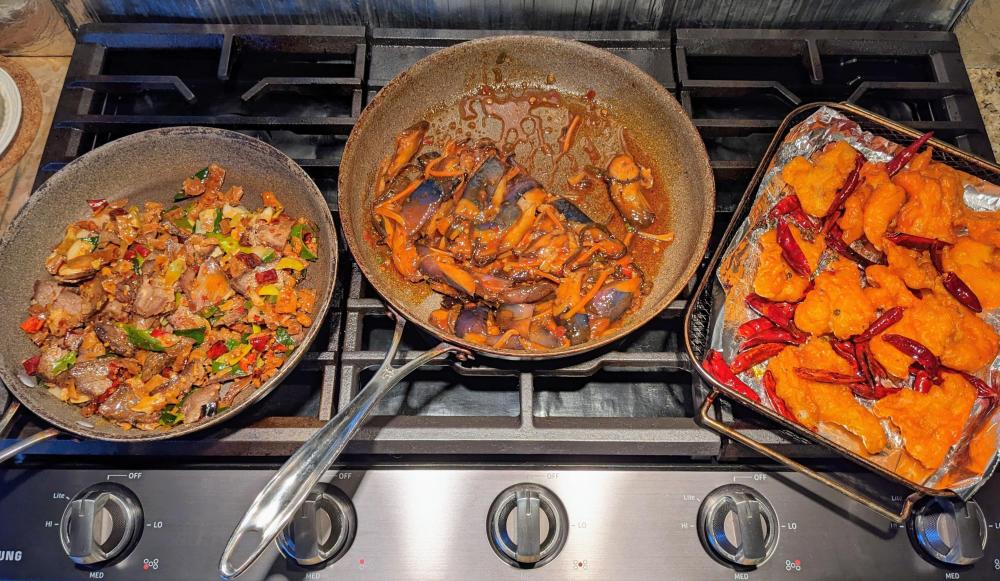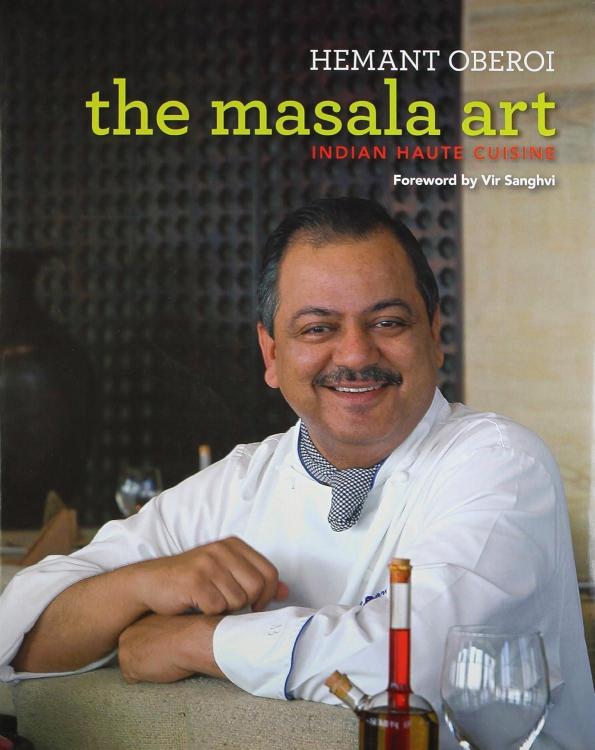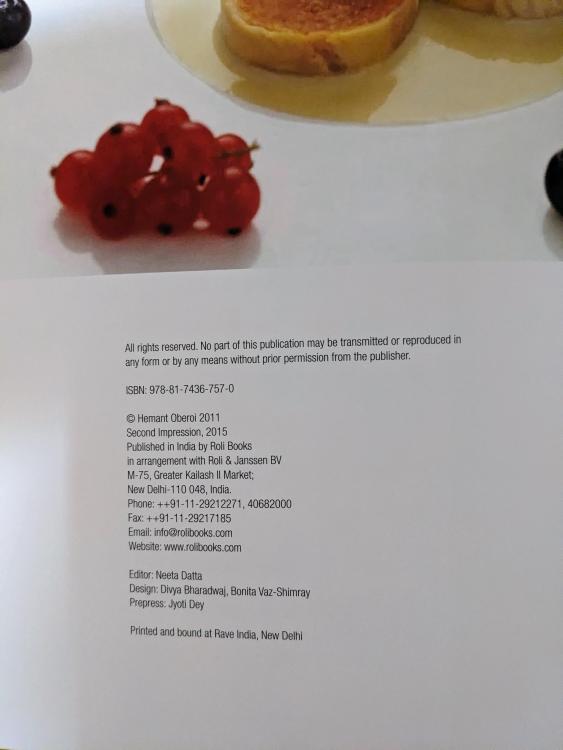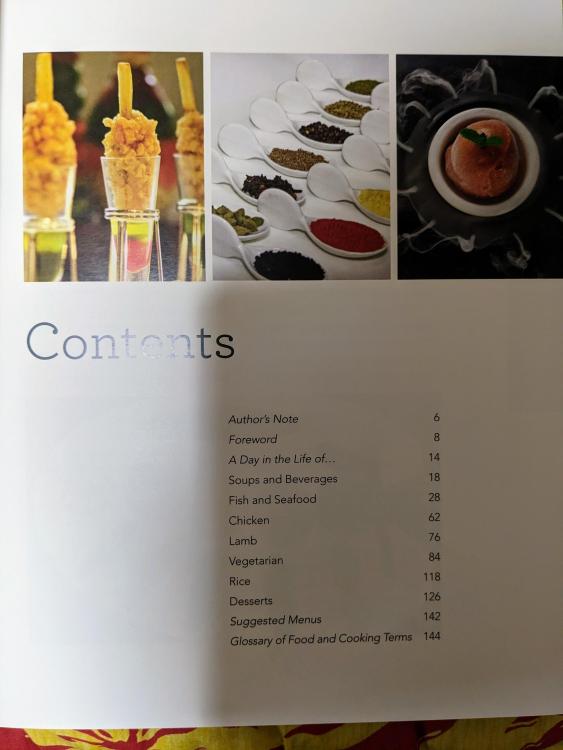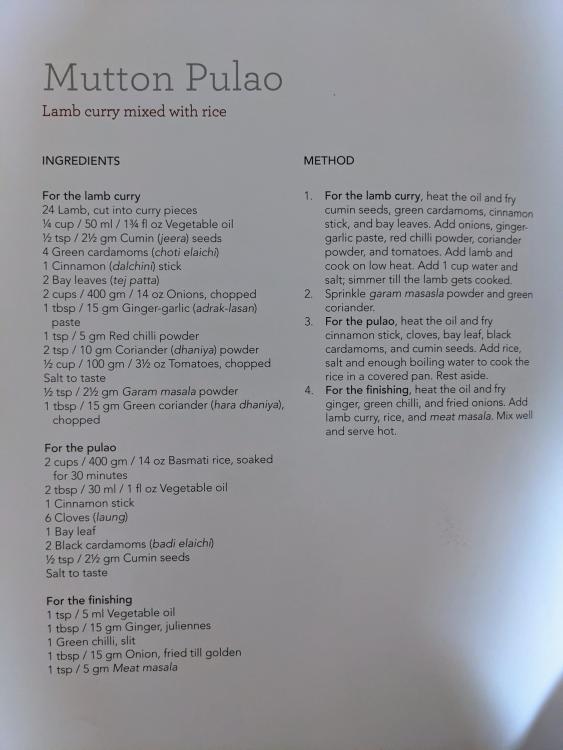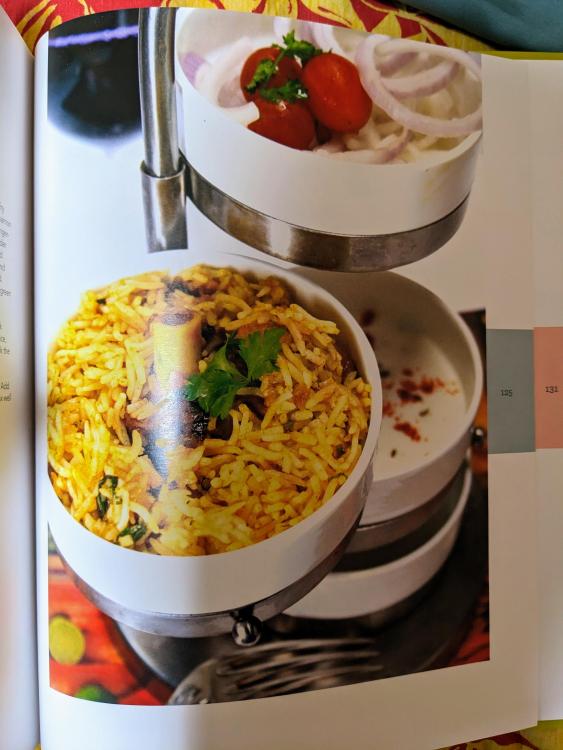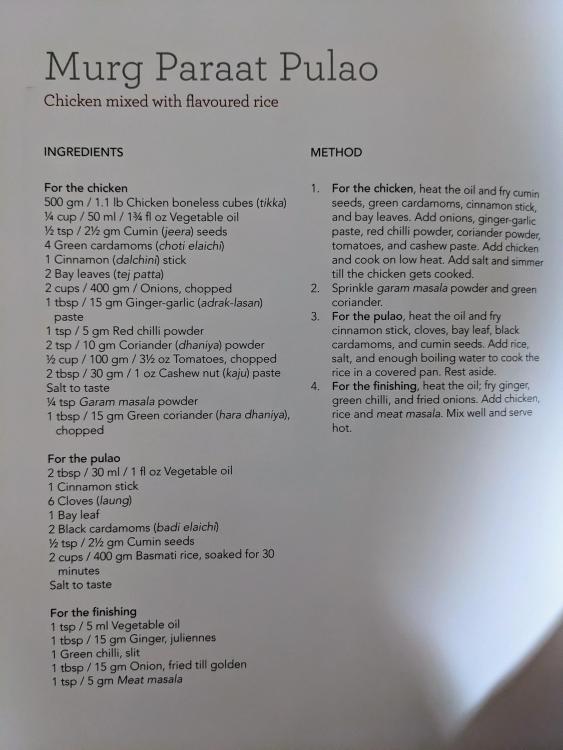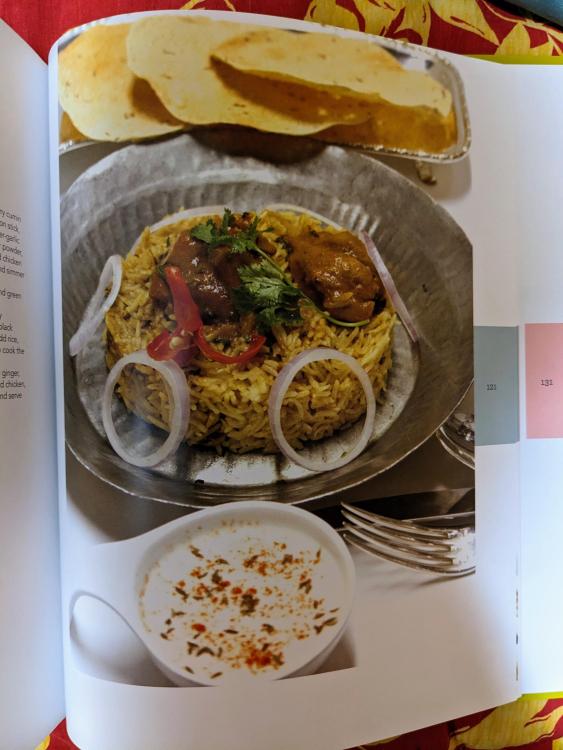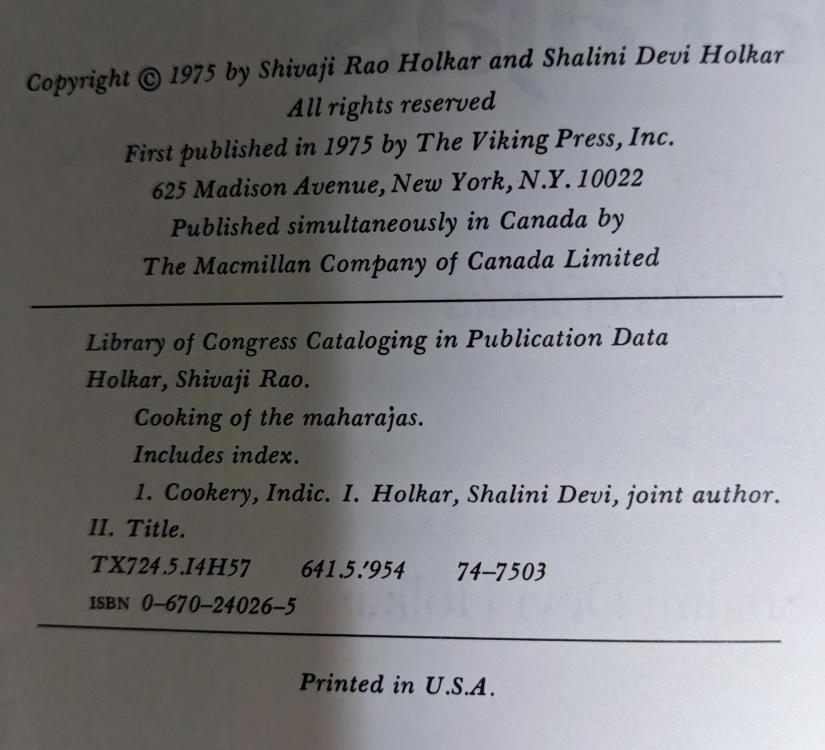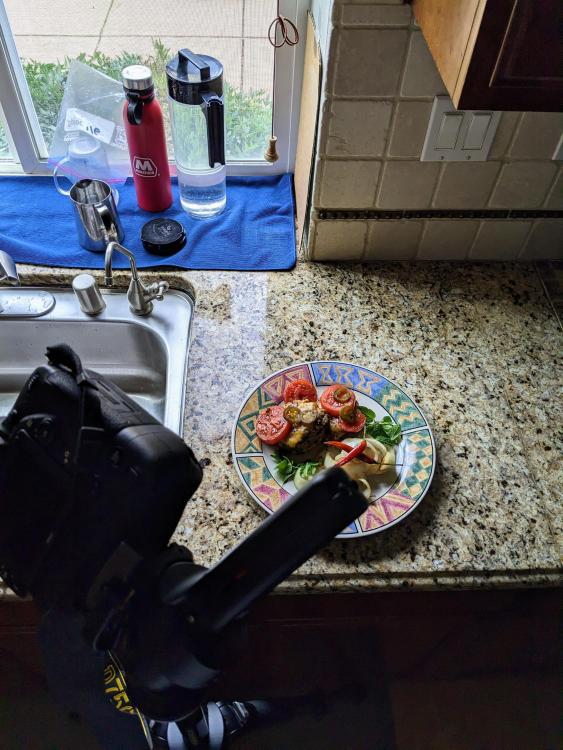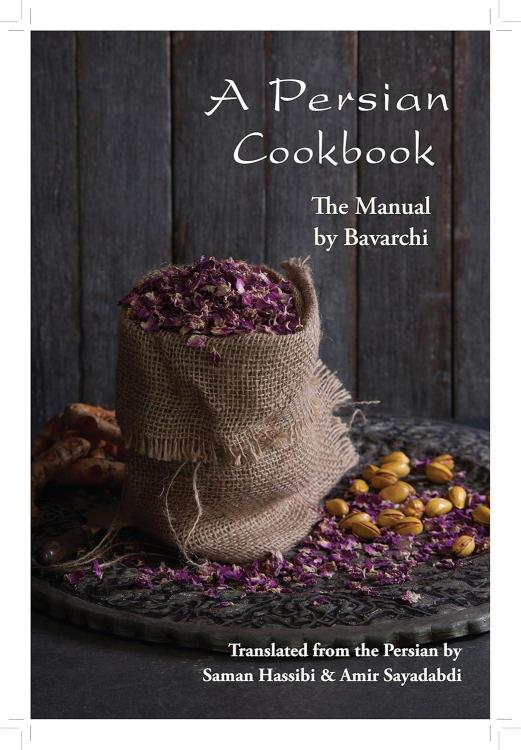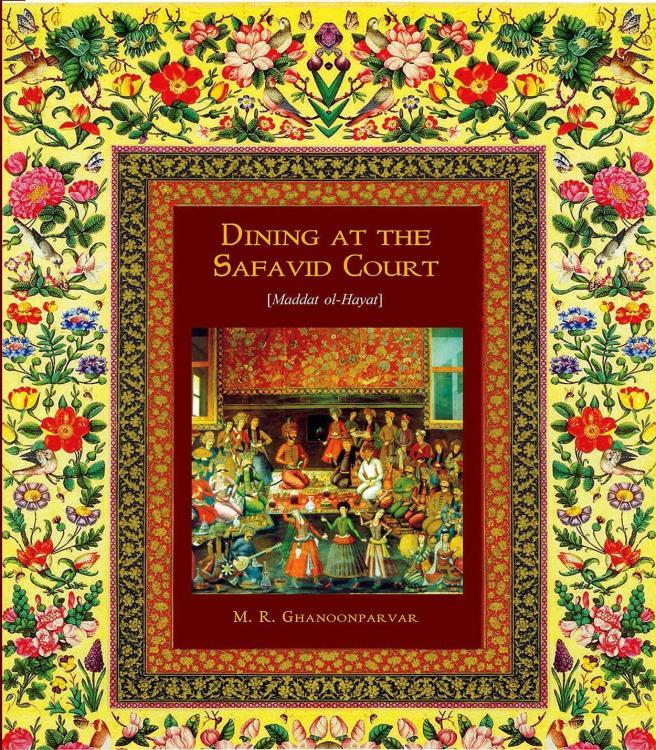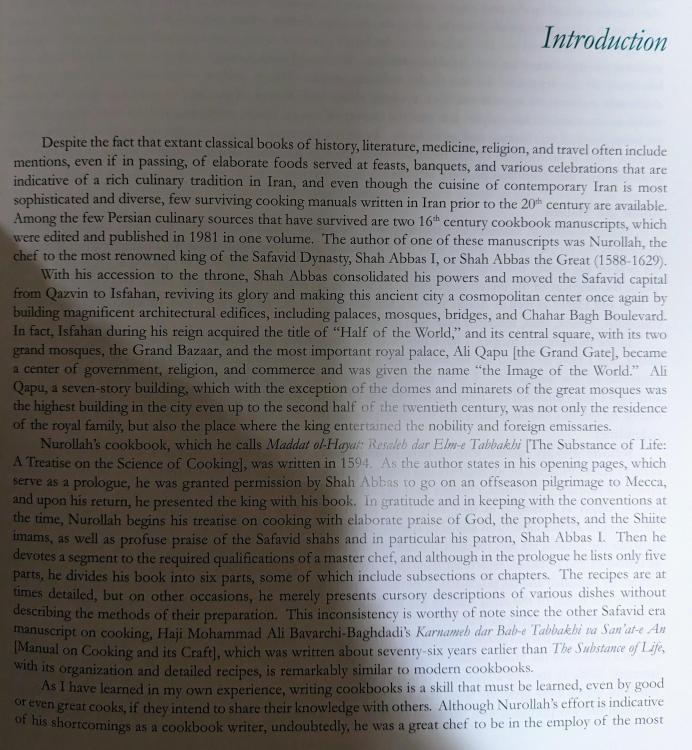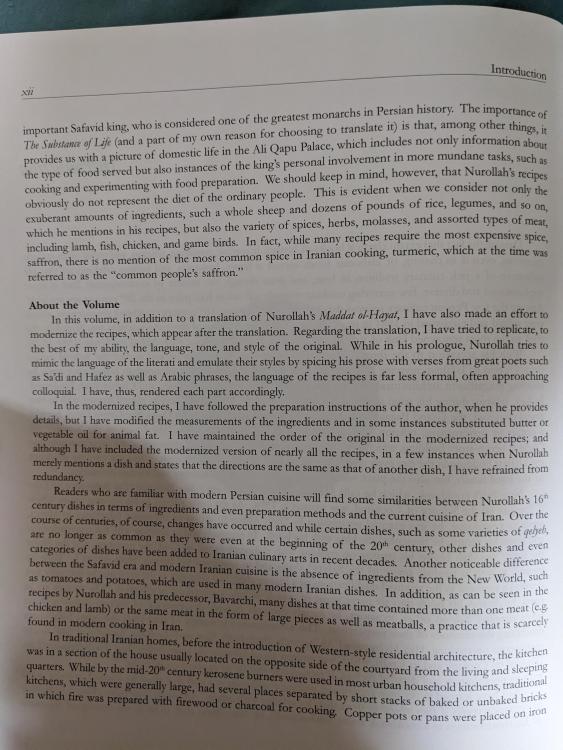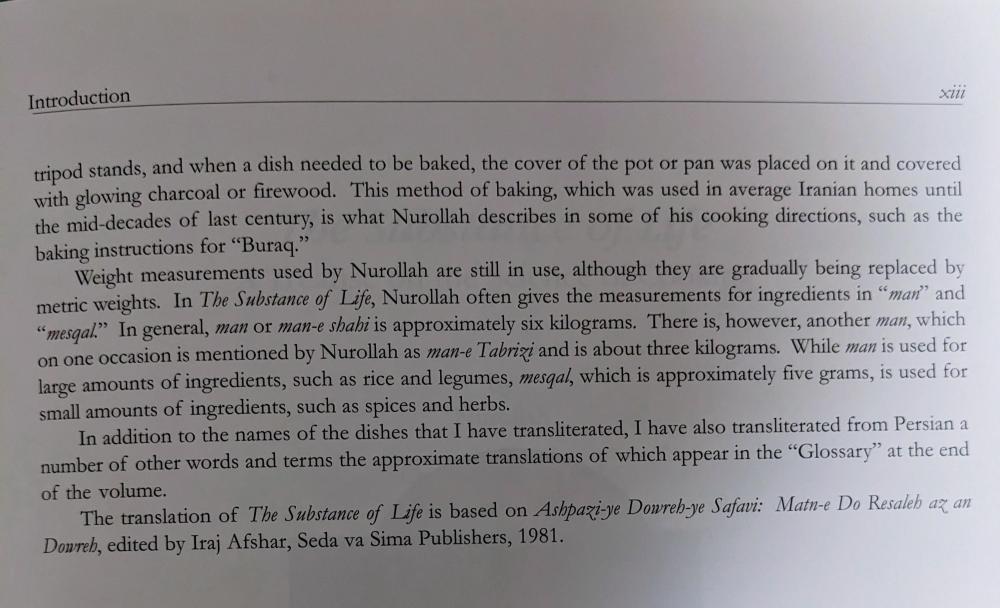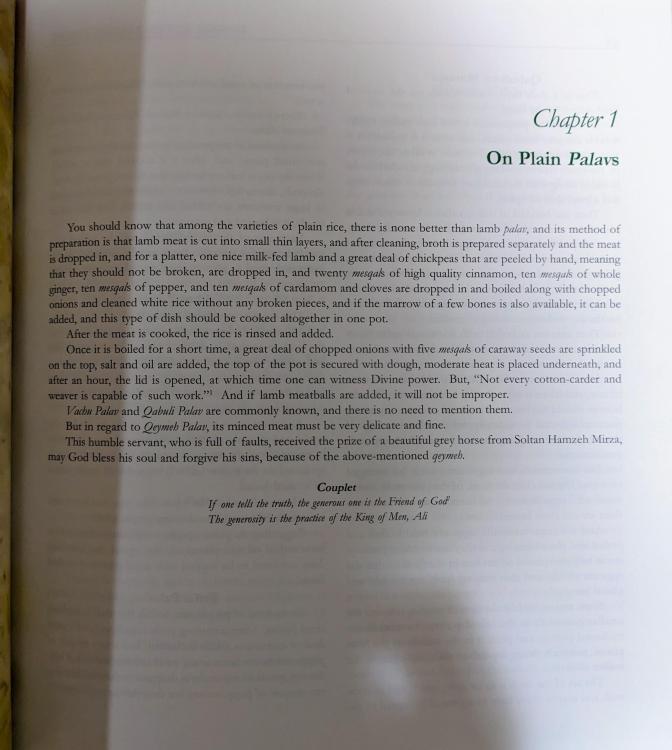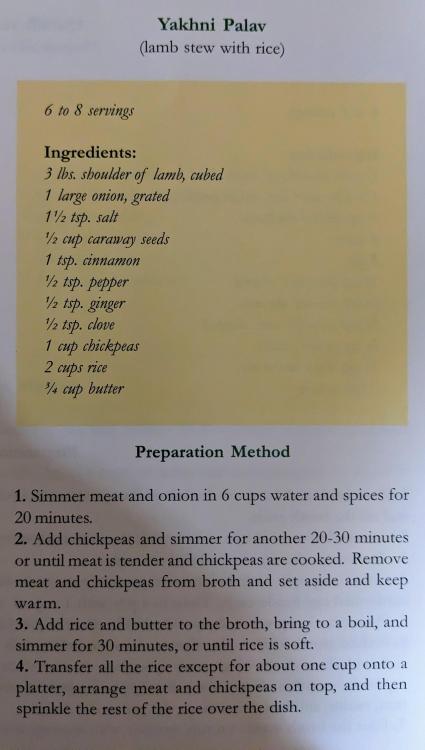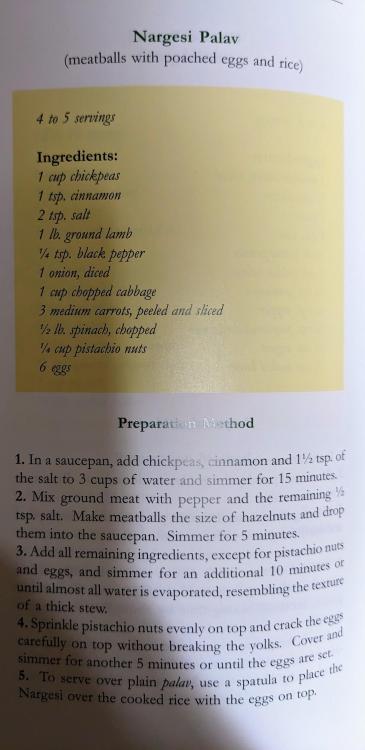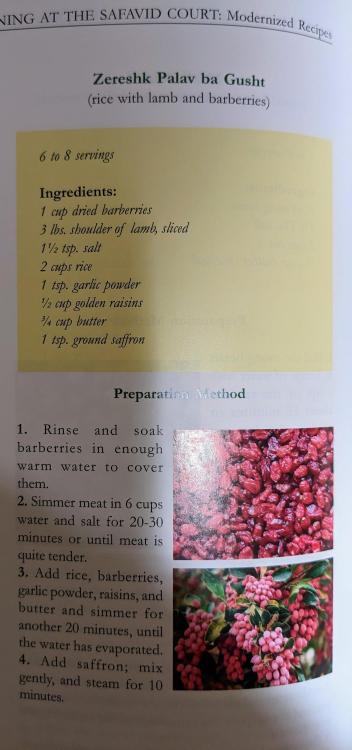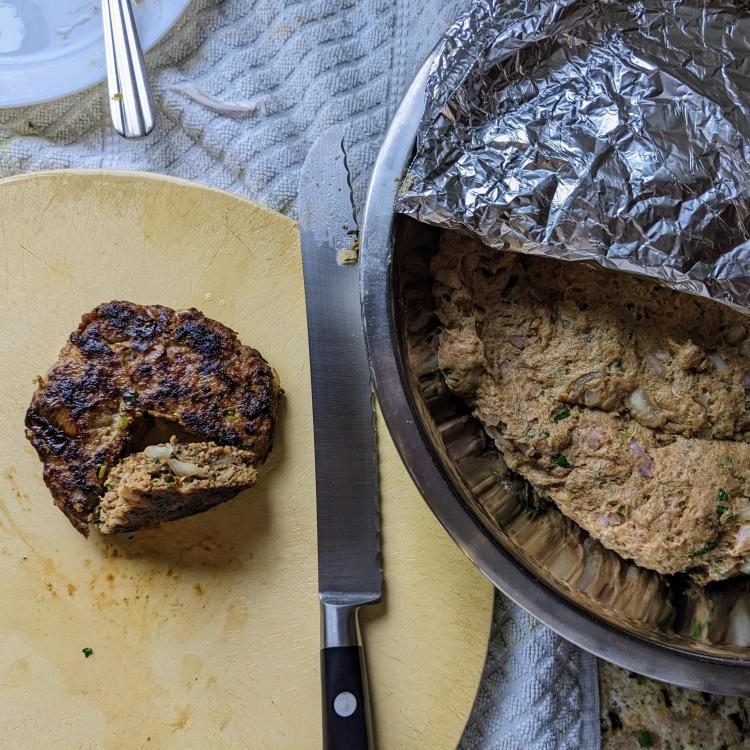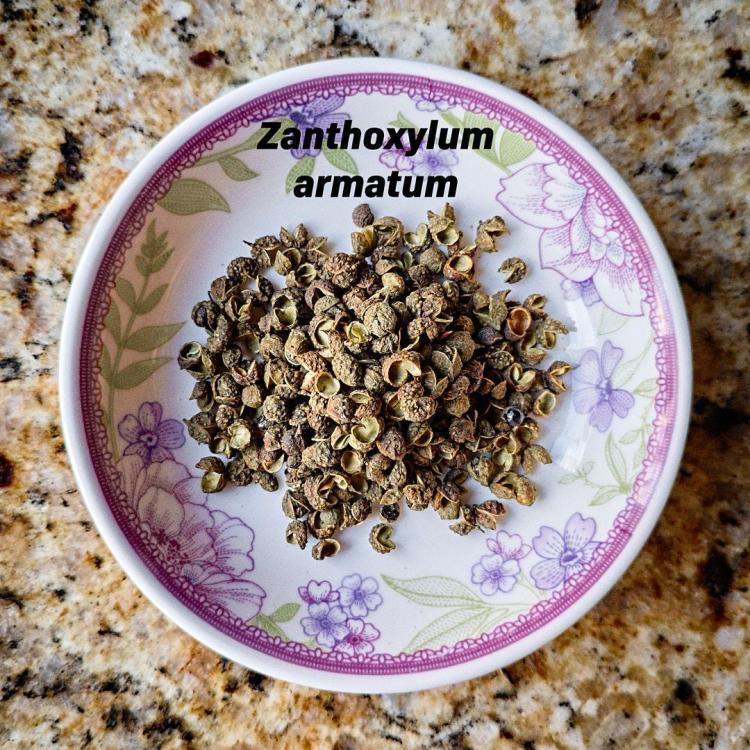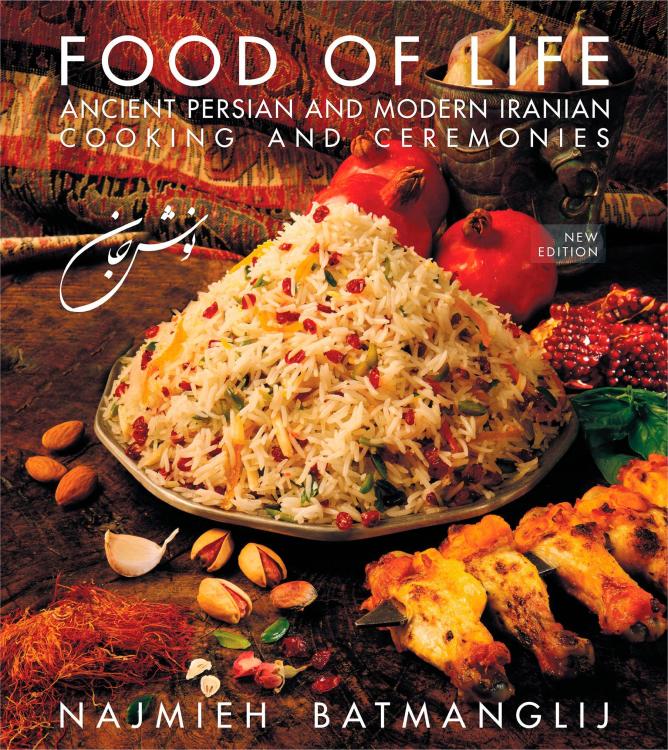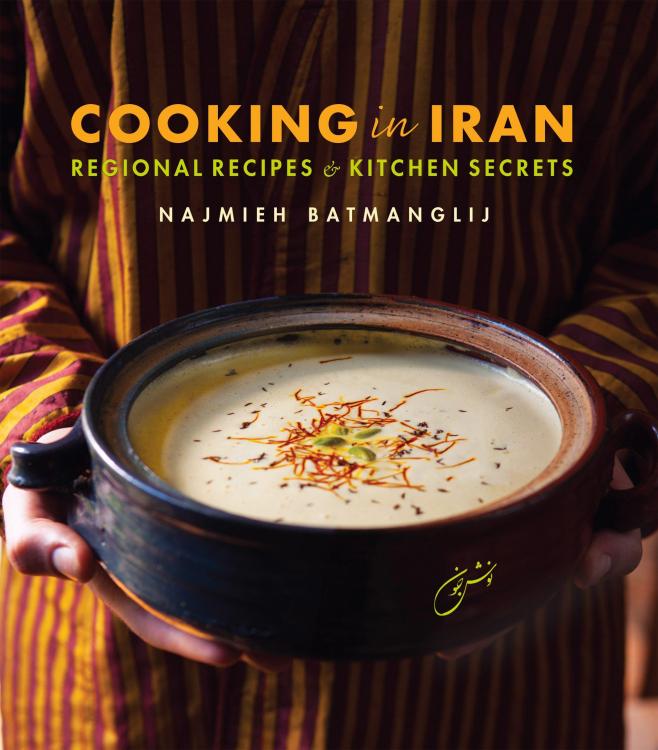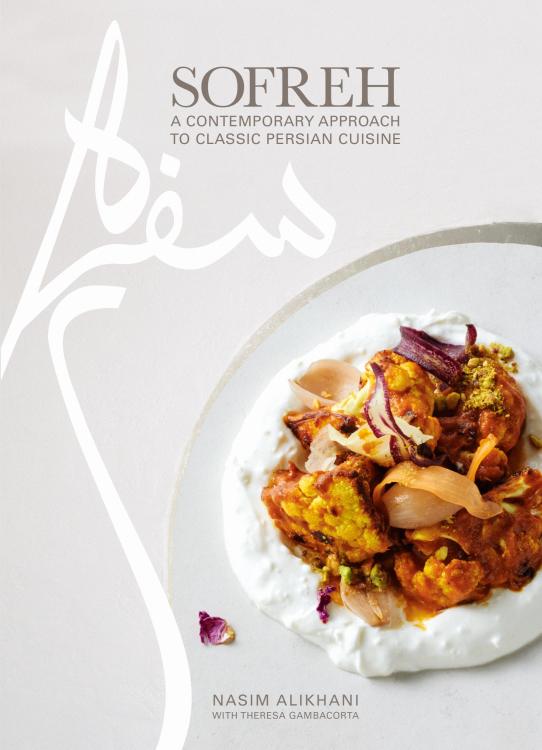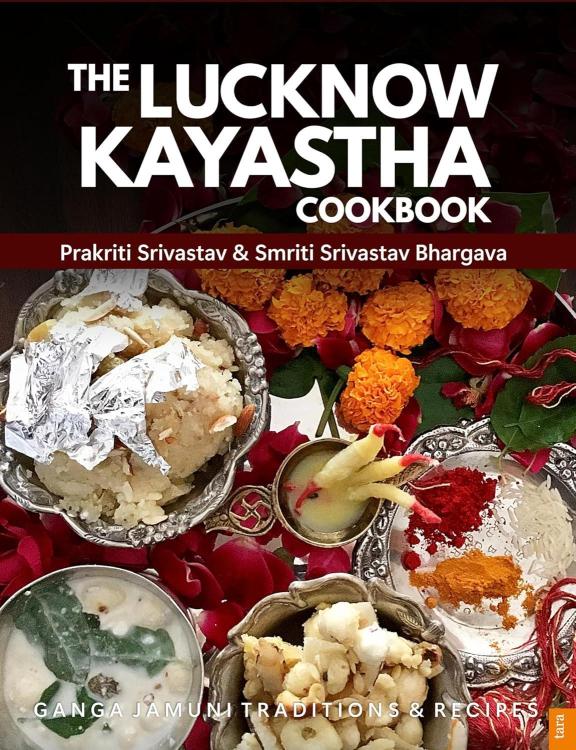
Tan Can Cook
legacy participant-
Posts
97 -
Joined
Content Type
Profiles
Forums
Store
Help Articles
Everything posted by Tan Can Cook
-
Curious, Ms. @Ann_T, is the chicken breast brined at all to impart (infuse) some flavor and/or seasoning into it? If it meant to be consumed as it with flavor boosts from the stuffing underneath the skin?
-
People like us (you and I) who are completed used to or knows about chole, dal makhani, etc, don't requires pictures. Hehe. My chole (even though soaked overnight) still needs to be cooked to me softer. I had to add more water and slow cook further. It is 20 minutes until 5 PM for dinner time here from across the pond. Well done to you @Tempest63. I remember your feast of cooking is forthcoming. The wait will be worthwhile! 🙂
-
-
Mr. @Norm Matthews sir. You were a wonderful and accommodating host. Situation (an extra Muslim guest) was beyond the scope of your control. It is fully understandable. I do want to bring up something and this is an interesting perspective on "proper etiquette." In my Burmese culture, we were taught to "eat little bit here and there" even if we don't like or normally consume. With the exception to the Muslim guest, the brother who flown in should have eaten a little bit, considering the amount of effort you went through. Well done to your cooking efforts!
-
Show us your latest cookbook acquisitions!
Tan Can Cook replied to a topic in Cookbooks & References
I use Saharkhiz branded zafaran from Mashhad, Iran. They are not pre-ground. I was informed it was superior Sargol grade, complete absence of any yellow. I paid a little over 100 USD for 25 grams. The "ground saffron" was referring to the changes in the book edition. The 4th edition (which I gifted to my local library) calls for blooming the saffron in rose water. The changes in the 5th edition in the same recipe just calls for "ground saffron." If I was cooking that recipe using 5th edition changes, I would take some of my whole saffron and ground them using a dedicated mortar and pestle and directly include them into the meat paste. -
Show us your latest cookbook acquisitions!
Tan Can Cook replied to a topic in Cookbooks & References
The 5th edition (40th anniversary) version of Food of Life arrived today. I gifted my previous 4th edition to my local library. I don't like it when hardcover books, especially large ones, don't have a dust jacket. This was one of the changes made by Persian cuisine doyenne Najmieh Batmanglij. As with all my books, I cover them in Brodart archival mylar, and all my books are in pristine and immaculate condition. When I cook, I digitize the recipe(s) and store that in the "Originals" folder in my Google Drive. From this original copy, I perform modifications and adaptations, e.g. scaling recipes or adding extra spices and herbs as I see fit. Several of the recipe ingredients are slightly tweaked. For example in 4th version, ground saffron is dissolved ("bloomed") in rose water. In this new version, ground saffron is used directly in the mixture, such as when making Kabab-e Koobideh. Instead of adding sumac (4th version), now, add some strained yogurt (or labneh) into the meat paste. For books without dust jackets, I make mylar dust jackets for them—kind of like how we had to cover our textbooks during school, all the way through high school. I remember it was mandatory. -
For tonight's dinner—it's takeout! As much as I am obsessed and laser-focused onto cooking foods from India, Pakistan, Bangladesh, and Iran, I do love Sichuan food. I am Burmese-Chinese afterall! HA! This is from "Sichuan Fusion" located at 3288 Pierce St Ste B-109, Richmond, CA 94804. Reasonable price and they use generous Sichuan peppers. It's not overwhelming and it is pleasant taste. Left: Beef (?) slices of beef. I just point at picture on the menu and ordered. Center: Eggplant with Hot Garlic Sauce Right: Sichuan Style Spicy Fish Fillet Not Shown: Pickled Mustard Soup with Fish Fillet
-
Today the 26th February, Masala Art: Haute Indian Cuisine by Hemant Oberoi arrived and after a thorough inspection of the recipes, bee-lining to the poultry and rice section—I was let down. I've seen more complex recipes in my regional cookbooks. This is where not only do I have to use spices and herbs like dried vetiver roots or lesser galangal, etc, I didn't see any of those spices and herbs I have in my expansive collection at all anywhere in this book. There were no samples or previews I could use to gauge and evaluate. Red flags went up, when in a section, Chef Oberoi states that using store bought "meat masala" is acceptable. Although "garam masala" or "chaat masala" or "rasam powder" are mentioned and used, there are no recipes in the book to make a bespoke blend. I can understand culinary intellectual property. Chef Oberoi probably doesn't want to give the exact recipes used at many of his high-end luxury restaurants worldwide. Other than that, being this is a book produced by Roli Books and Chef Hemant Oberoi ji is an esteemed member of the luxury restaurant industry, the food photography is top notch.
-
First, My Commentary Shivaji Rao Holkar is the short form name of Maharajkumar Shrimant Shivaji Rao Holkar of Indore (aka Prince Richard Holkar). Shalini Devi Holkar (Princess Sally Holkar) is the Indian name via marriage of Ms. Sally Budd of Dallas, Texas. They met while being students at Stanford University in Palo Alto, California. Married in 1967. This book was published in 1975. Link+ is amazingly awesome! I didn't know that my local library was affiliated or have membership access free to the public with library card. In addition to my own collection of books, I have been requesting (within reason) books from all over California's public libraries! I have not cooked this recipe...yet! I thought it would be great to share that royal recipes are "relatively easy" and "immensely friendly to the Western kitchens." Filmed at Prince Richard Holkar's residence called Ahilya Fort in Maheshwar in Madhya Pradesh. You can see an excerpt of Prince Richard Holkar talking about his book from a recent video on the YouTube food channel called "Khaane Mein Kya Hai" (What is There to Eat?). Talk starts at around 9:59. Serves: 6 Founder’s Feast The founder of the dynasty, the first of the seven Nizams to rule Hyderabad, was Asaf Jha, for whom this dish is named. A famous general before he became a ruler, Asaf Jha used to say to his men that to hold a fort there must be only a head, two arms, and two legs. By that, he meant a commander, reinforcement from two quarters (the arms), and food and water in the fort (the legs). Food in the fort may have meant rice and lentils for the regiments; but for Asaf Jha himself, there were always elaborate dishes. This kaliya, or saucy meat, was one of his favourites. Rich with saffron, almonds, and raisins, it is the epitome of refined Muslim cuisine. Ingredients 3 cups unflavoured yogurt, beaten smooth with a fork 2 Tbs. minced garlic ¼ cup scraped and minced ginger root ½ cup clarified butter 4 tsp. salt 2 lbs. lean, boneless lamb (preferably shoulder or leg), cut into 2-inch cubes ¼ cup clarified butter or vegetable oil 2 Tbs. seedless raisins ½ cup slivered blanched, unsalted almonds 1 cup coarsely chopped onion 1-2 Tbs. ground hot red pepper 2 tsp. sugar 2-4 fresh, green chili peppers, seeded and minced (optional) ½ tsp. saffron threads ¼ cup minced fresh coriander leaf (cilantro) (optional) Method Three hours before cooking, pour the yogurt into a strainer lined with a double thickness of dampened cheese-cloth and set over a bowl to drip. (One cup of waterless yogurt will be required.) Purée the garlic, ginger, and salt with ¼ cup water in the blender. Rub this purée into the meat. In a heavy, medium-sized saucepan, heat the butter and fry the meat until it is golden and the natural water evaporated. Add 2 cups water and cook uncovered over medium-high heat until tender. (Add up to 1 cup more water as necessary to tenderize.) All the water should boil off before beginning the next step. Set aside off heat when ready. Fifteen minutes before serving, in a very small skillet or saucepan, heat the butter and fry the raisins until they puff. Remove to the meat pot. In the remaining oil, fry almonds until golden. Remove to meat pot. Add enough fresh oil to the skillet to cover the onions and fry them until they are golden and crisp. Drain and add into the meat with all remaining ingredients in this section. At this point, the meat can be held for several hours. Twenty minutes before serving, reheat it gently and complete preparation. Powder the saffron and put to soak in a cup with 2 tsp. hot water. Just before serving, beat this saffron water into the 1 cup reserved waterless yogurt. Stir into the meat with the coriander leaf. Beat through and serve immediately over plain, white rice.
-
Long overdue. In case anyone is interested, I preordered a book called "India Local: Classic Street Food Recipes" from the famous and high quality Roli Books publishers. It is not yet released in the USA, but soon—March 3, 2025. This book was originally published in India in September 2023.
-
Today's dinner is leftovers from yesterday. I also got a chance to assemble and "make it pretty for the eyes." I always take my pictures of food for my blog near a large window in that same exact spot. The specular highlights you see on tomatoes and food is from that large window by the sink. I also drizzle some of oils used in cooking the patties to pick up highlights.
-
This is creative and well done.
-
Baqdadi, Bavarchi. A Persian Cookbook: The Manual. Translated by Saman Hassibi and Amir Sayadabdi. London: Prospect Books, 2018. The full original name in Persian is Karnameh dar Bab-e Tabbakhi va San'at-e An [Manual on Cooking and Its Craft] by Bavarchi Baqdadi. This is another fascinating "culinary time travel" cookbook, though I do not recommend cooking from it. I wrote the following review on October 13, 2023: This book is purely an academic and scholarly glimpse into the past. That's about it. I returned the book for a full refund. As a cook who is experienced with cooking Persian cuisine using Food of Life and Cooking in Iran by Najmieh Batmanglij, I am familiar and know my way around the Persian kitchen. As a cooking book, it is not "practical" in the sense that the instructions are written like prose. In other words, although you can clearly cook from the book, you will be doing the homework of restructuring and reformatting the prose into a modern-day recipe format. This includes a full rewrite with a list of ingredients for the modern kitchen, along with minor unit conversions [conversions are in classical Persian units of measure]. If you enjoy that kind of process, by all means, you will probably enjoy this book. For me, I thought this book was translated and restructured and formatted into a modern-day recipe format. Nope! You've been warned. Purchase with caution. You'll more than likely have to flip back and forth to look up Farsi words used dispersed throughout the text.
-
Research Purposes Only: I also not recommend this book for cooking, but rather time travel reference book into the Safavid Era Persia (1501–1736). The translator is a Persian scholar and expert at University of Texas—Mohammad Reza Ghanoonparvar, PhD. Nurollah. Dining at the Safavid Court: Madatolhayat [The Substance of Life], 16th Century Royal Persian Recipes. Translated by Mohammad Reza Ghanoonparvar. Costa Mesa, CA: Mazda Publishers, Inc, 2017. The author is Nurollah, chef to Shah Abbas I (1 October 1587 – 19 January 1629). The full original working title in Persian is Maddat ol-Hayat: Resaleh dar Elm-e Tabbakhi [The Substance of Life]. I took some pictures of excerpts from this book in case they intrigue someone to explore it further. The only reason this book didn’t make it into my personal collection is that I prefer to maintain a focused approach. I am already deeply immersed in learning and exploring regional Indian, Pakistani, and Bangladeshi culinary traditions, including culinary arts from the Mughal-era Hindustan. Expanding beyond this scope would dilute the depth of my engagement with these cuisines. The recipes highlighted in yellow text boxes are modernized versions. When I reached out to Dr. Ghanoonparvar, he responded via email on May 21, 2024: Based on Dr. Ghanoonparvar's reply, I hope you can understand my hesitation in cooking the modernized recipes. Regardless, a fascinating read and culinary time travel to 16th century royal Persian court.
-
Please excuse the mess. It's 4:16 ish PM here in California. This is dinner for my parents and younger brother. When ready, I'll make some several layers of puff paratha from Asian store and eat like "rolls" with fresh, thinly sliced shallots with lemon juice, salt and sugar to taste, and some Trader Joe's sweet and sour jalapeños peppers. The patties are called Kachche Gosht ki Tikiya (raw meat patties) and this version originates from Rampur, Uttar Pradesh, India. Another common name is Chapli Kebabs, although the original version hails from Peshawar, Pakistan. The size in the picture is about palm-sized. The Pakistani or Afghani versions are much larger and their shape is similar to the sandal footwear, hence it's name chapli to describe the chappal. It's lightly spiced. There is some heat from yellow chili powder. There is freshness from inclusion of freshly chopped shallots, mint leaves, and cilantro.
-
These books are not part of my personal collection; however, I have had the opportunity to borrow them from my local library and review them briefly. I highly recommend conducting your own due diligence to ensure they align with your Persian cooking goals. Highly Recommended: brand new copies are competitively priced and used, second-hand copies are easily available. Good balance of information on Persian culture and cuisine. Relatively budget-friendly on food ingredient(s). Contain recipes of popular menu items served at Persian restaurants. Heller, Leila Taghinia-Milani, Lila Charif, Laya Khadjavi, and Bahar Tavakolian. Persian Feasts: Recipes & Stories from a Family Table. London: Phaidon Press, 2024. Deravian, Naz. Bottom of the Pot: Persian Recipes and Stories. United States: Flatiron Books, 2018. Not Recommended: I personally find "memoir-style" cookbooks with excessive personal anecdotes—"too much talk"—abhorrent, unless the recipes and cooking techniques justify the cost. While these books may introduce you to Persian cooking, the previously recommended ones excel in writing, style, and balance. The recipes in the following books are overly simplified, often diluting flavors to cater to a broader audience unaccustomed to bold spice profiles, or recipes are mere templates or sparse versions. In my opinion, these books are unnecessary when you have the works of Najmieh Batmanglij, a true culinary authority on Persian (Iranian) cuisine. Her Food of Life: Ancient Persian and Modern Iranian Cooking and Ceremonies and Cooking in Iran: Regional Recipes & Kitchen Secrets are invaluable and comprehensive resources, and many of these lesser books reference her works in their bibliographies. Bundy, Ariana. Pomegranates and Roses: My Persian Family Recipes. United Kingdom: Paisley Media Limited, 2018. Khan, Yasmin. The Saffron Tales: Recipes from the Persian Kitchen. United Kingdom: Bloomsbury Publishing, 2016. Allahyari, Hamed, Dani Valent. Salamati: Hamed's Persian Kitchen—Recipes and Stories from Iran to the Other Side of the World. Australia: Allen & Unwin, 2022. Setareh, Saghar. Pomegranates & Artichokes: Recipes and Memories of a Journey from Iran to Italy. Australia: Murdoch Books Pty Limited, 2023. Shaida, Margaret. The Legendary Cuisine of Persia. United Kingdom: Grub Street Publishing, 2018. Shafia, Louisa. The New Persian Kitchen: [A Cookbook]. United States: Clarkson Potter/Ten Speed, 2013. Duguid, Naomi. Taste of Persia: A Cook's Travels Through Armenia, Azerbaijan, Georgia, Iran, and Kurdistan. United States: Artisan, 2016.
-
Please don't think or compare like this. Those pictures came from my portfolio for food and cooking. With the exception or perspective view images, the top down views of my food are taken with my Google Pixel 4 XL from 2019 model. If your phone has something called portrait mode or similar name, use that. The phone app uses computational photography to mimic the depth of field from DSLR cameras. Modern phone cameras are getting really good at this.
-
Parsi Dhansak Masala from Parsi Food and Customs: The Essential Parsi Cookbook By Tan Can Cook Modified and Adapted from Bhicoo J. Manekshaw The original recipe specifies a "1-inch piece of a round turmeric variety,"—Curcuma amada or Curcuma aromatica or something else—which is not readily available in Northern California or the West (U.S., Canada, U.K.). In its place, I used the common, everyday turmeric (Curcuma longa). Additionally, "dried sweet lime peels" were not accessible, so I substituted them with limoo amani (Persian dried limes). Ingredients ⅛ tsp turmeric powder 3.125 g curry leaves 15.625 g cumin seeds 3.750 g caraway seeds [Carum carvi] 6.250 g coriander seeds 3.125 g mustard seeds (yellow or black) 3.125 g fenugreek seeds 3.125 g cinnamon sticks 3.125 g cloves 3.125 g green cardamom 12.500 g black peppercorns 3.125 g poppy seeds 3.125 g Indian bay leaves 3.125 g dried orange peels, pith removed 3.125 g limoo amani (Persian dried limes) Method Dry roast each ingredient individually with 1-2 tsp of oil on griddle. Cool, grind and mix. Store in an airtight glass container. It can be kept for over one year.
-
Mustard oil (sarson ka tel). 1 L sarson ka tel cost $7.99. Locally. It is completely safe to consume when used in moderation. Simply heat it to its smoking point, then allow it to cool slightly before cooking—just like any other cooking oil. Sarson ka tel is a compulsory cooking oil in Bengali (West Bengal and Bangladesh), Bihari, Rajasthani, and even some Lucknowi (Awadhi) cuisines. It adds a distinct, sharp taste and aroma that is both bold and fascinating! Look for kachi ghani (cold pressed) on labels. In the USA, FDA regulations require sarson ka tel to be labeled "For External Use Only." However, people across various Indian states have been cooking with this oil for centuries. It is completely safe for consumption—don’t be deterred by the label! The same applies to virgin coconut oil (nariyal ka tel). Due to its low melting point, it solidifies in colder temperatures. To liquefy, simply prepare a warm water bath and submerge the bottle for a few minutes. 750 ml nariyal ka tel cost $4.99. Locally.
-
Absolutely! I encourage everyone to gradually move away from pre-packaged and pre-made spice blends and start making their own at home. I have nothing against store-bought blends or pastes—they're a great starting point for building confidence in the kitchen. I myself began with MDH garam masala and enjoyed using Patak’s curry pastes. Once I gained confidence in the kitchen, I started assembling my base whole spices to craft a simple garam masala. Over time, I slowly sourced rare and specialty spices and herbs, refining my blends for 1:1 recipe reproducing from books in my collection. Only 15 more days to your Curryfest! Happy cooking @Tempest63 ji. Please do share pictures of your cooking.
-
Shubha Dinam @KennethT. This is the only Malayalam greeting I know. They also use "namaskaram," which is the South Indian version to north's "namaste" or "namaskar." These are great videos, especially the ones direct from members of community themselves in India. The video channel is from Kerala, they speak Malayalam, their official language. One of the ways that has helped me from cooking from my books is to find videos from similar channels. This gives me a visual roadmap of what to expect and techniques (if applicable). The book(s) are also clear in their directions. If you find videos that mentions or uses any of the regional spice blends, feel free to share. I plan on gradually updating this post I started with regional of regional spice blends from my books that I've made and saved in mise en place collage format.
-
Hi Ms. Nancy. It's great to bump into you here. I am aware of the book. I managed to check it out from my library about a year ago. For me, the recipes are more "Americanized fusion" and immensely friendly for beginners who started or wants to learn easy-to-cook Persian recipes. The author Naz Deravian communicates well with newcomers to Persian food. Although I have not cooked any of Naz's recipes, what I did was compare the selective recipes from Bottom of the Pot to Food of Life. Naz's Joojeh Kabab recipe lacks further aromatic fragrances of rose water and lemon zest that appears in Food of Life. I am not trying to be too nitpicking—I prefer to smell perfumes. As it is what Iranian food is known for. The Iranians love saffron and put that spice into almost everything as well as rose water. Even though Bottom of the Pot is not for me, it is a highly recommended book for beginners and budget friendly for ingredients wise. It's actually on my list to mention in a future post here in this thread. One time, months ago, I drove 76 miles round trip to another city, because the recipes in Food of Life and Cooking in Iran calls for: pomegranate molasses, grape molasses, and limoo amani (Persian dried limes), and golpar (a uniquely Persian spice).
-
This post is dedicated to Iranian (Persian)-specific cooking ingredients. If you have a Mediterranean, Greek, or Middle Eastern grocery store near you, give them a call and ask—they may carry what you're looking for. Zereshk (dried barberry) [Berberis vulgaris]. Kalamala Persian Grocery—https://kalamala.com—is the only source I have used to purchase high quality zereshk. 15922 Strathern St. #14. Los Angeles, CA 91406. They have $7.99 flat rate shipping to the continental US only. Store zereshk in fridge in ziplock bags and they last about a little under 12 months. 907 g (2 lbs) zereshk cost $19.59 + $7.99 (Flat Rate Shipping) = $27.58. Limoo amani (dried limes). This is not an Iran-exclusive ingredient—you’ll find limoo amani used in Iraqi and other Middle Eastern cuisines. I was fortunate to source it locally from County Square Market, a Filipino-owned Asian grocery in Vacaville, California. They have a small section dedicated to Sadaf® products. Before this discovery, I used to drive 76 miles round trip to Super Tehran Market at 1112 Meadow Ln, Concord, CA 94520. 113 g (4 oz) limoo amani cost $3.39. Locally. Golpar (Persian hogweed) [Heracleum persicum]. This is another uniquely essential Persian spice, most commonly sold in ground form. The whole seeds are expensive, and in my opinion, not worth the purchase—stick to powdered golpar instead. Be aware that packaging is often mislabeled as "ground Angelica" (Angelica spp.). Do not confuse golpar (Heracleum persicum) with Angelica spp., as they are entirely different botanicals. 43 g (1.5 oz) golpar cost $2.59. Locally. The following ingredients are commonly available locally at County Square Market and Super Tehran Market. If not, check Kalamala Persian Grocery as an alternative source. Rob-e anar (pomegranate molasses). 10 fl oz rob-e anar cost $5.99. Locally. Shireh angoor (grape molasses). 16 fl oz shireh angoor cost $5.00. Locally. Ab-ghooreh (verjuice / sour [unripe] grape juice). 32 fl oz ab-ghooreh cost $13.49. Locally. This is another compulsory spice in Marathi cuisine. It’s fascinating how Sichuan green peppercorns found their way into the Malabar region of India, becoming an integral part of Goan and Konkani cuisine. Tirphal / teppal (Sichuan green peppercorns) [Zanthoxylum armatum]. 3 oz tirphal / teppal cost $5.99. Locally.
-
I will start this topic with books on Ashpazi-ye Irani (Persian Cuisine) that are in my personal library. Then, in subsequent posts (where applicable), I'll mention the books that I've borrowed from my local library or returned purchases because the content(s) of the book(s) don't align with my cooking style, e.g. too "Americanized" or "overly simplified". Although those books might not fit for me—they might be what you're after and matches with your Persian cooking goals. Alikhani, Nasim, and Theresa Gambacorta. Sofreh: A Contemporary Approach to Classic Persian Cuisine. New York, NY: Alfred A. Knopf, 2023. Batmanglij, Najmieh. Food of Life: Ancient Persian and Modern Iranian Cooking and Ceremonies. 4th ed. Chevy Chase, MD: Mage Publishers, 2021. Batmanglij, Najmieh. Cooking in Iran: Regional Recipes & Kitchen Secrets. 2nd Updated ed. Chevy Chase, MD: Mage Publishers, 2022. Consider Najmieh Batmanglij to be the "Julia Child" of traditional Persian cooking. Her famous magnum opus Food of life debuted in 1986. From recent news, Najmieh Batmanglij opened restaurant alongside Michelin-starred chef Christopher Morgan called Joon based in Vienna, Virginia. Nasim Alikhani is the chef and owner of the Persian restaurant of the same namesake—Sofreh—in Brooklyn, New York. In contrast to Najmieh's traditional Persian cooking, Chef Nasim's book is modernized and offers a contemporary interpretation of classic Persian foods.
-
The following books are not in my personal library; however, I am thinking of adding them down the line. I have fallen into the "rabbit hole" that is regional Indian cuisine and I want to vacuum as much information on this topic as I can. Because these books are sourced as imports from India, they can get expensive. Baniya Legacy of Old Delhi Culture and Cuisine by Gunjan Goela (ISBN: 9788183862073) cost around 37.28 USD while The Lucknow Kayastha Cookbook: Ganga Jamuni Traditions & Recipes by Prakriti Srivastav and Smriti Srivastav Bhargava (ISBN: 9788183862127) cost 25.94 USD. Unless I overlooked, the Baniya Community are strict vegetarians. You can find these books on the Biblio platform from the seller "Cold Books". I am waiting for them to source a newer book on Sindhi cuisine published by the large HarperCollins India. The authors are considered respective culinary doyennes and member of the community on which they are writing. Both the Baniyas (Banias) and the Kayastha are communities within the gigantic diversity that exist in India today.





